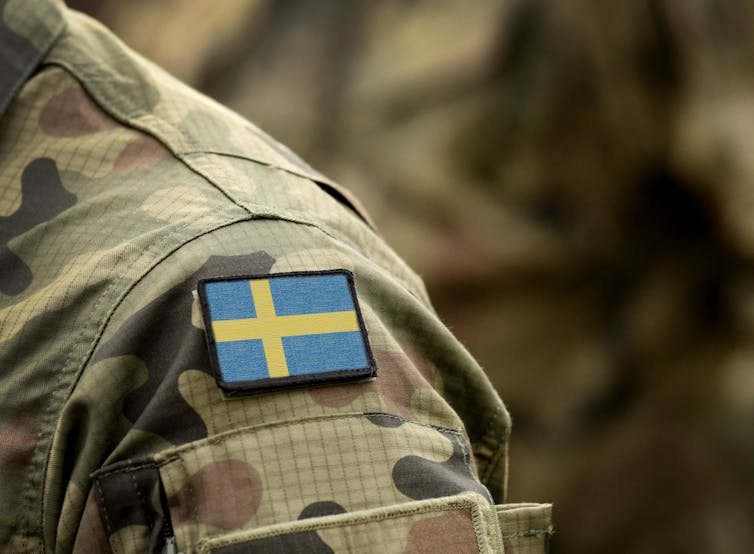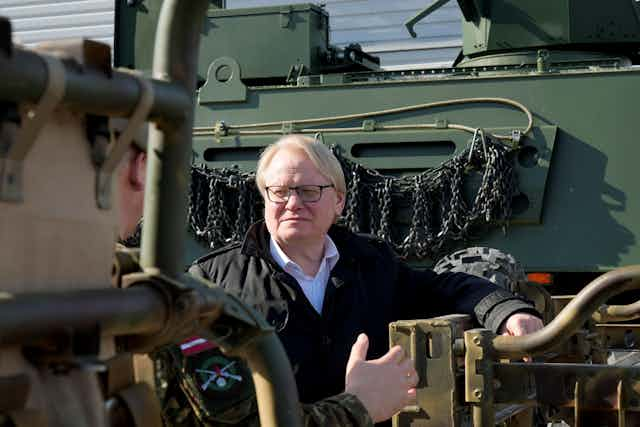Sweden’s application to join Nato in May marks a major shift away from its longstanding position as a neutral state, stretching back to 1812.
Yet following Russia’s invasion of Ukraine, the decision now appears to command wide political support across the Swedish government, parliament and population. Swedish public support for Nato membership has gradually increased over the last decade, with 58% now in favour and only 19% opposed. The major Swedish political parties all decided to support the membership application, too.
Sweden’s neutrality began after a disastrous loss of territory to Russia during the Napoleonic wars in 1812, and this security policy later enabled it to distance itself from the shifting military alliances in Europe during the 19th century. During the 20th century, Sweden’s neutrality developed into an active internationalist foreign policy promoting international peace and security through diplomacy, cooperative security arrangements and international organisations.
Throughout the cold war, Sweden used its neutral position to moderate the confrontation between the east-west blocs; while aligning itself clearly with support for democracy, human rights and liberal market systems. After the cold war ended, Sweden energetically supported efforts to develop a new co-operative European security order centred around rules on conflict prevention and respect for national sovereignty and national borders, as embedded in the agreements established by the Organisation for Security and Cooperation in Europe.
Within this framework, Sweden aimed not only to enhance its own security but also the security of the Nordic and Baltic Sea regions. This included the newly independent states of Estonia, Latvia and Lithuania, with which Sweden has strong cultural, social and political affiliations.
Russia’s increasingly assertive foreign and security policy under President Vladimir Putin since 2004 posed increasing challenges to these objectives. Although Sweden has not been a prominent focus for Russian government pressure and provocations, Estonia, Latvia and Lithuania definitely have. They became regular targets of cyberwarfare and military incidents with Russian forces on their borders. Russia’s 2008 military intervention in Georgia intensified Baltic security fears that their neighbour might also intervene in their territory, and Sweden and Finland inevitably followed those security debates closely.

From 2008 onwards, Sweden discovered covert Russian submarine operations within its territorial waters in the Baltic Sea. It became frustrated that these incidents continued despite making diplomatic protests to Russia. In response, Sweden reversed the winding down of its anti-submarine warfare capabilities, and imposed strong restrictions on Russian commercial activities on Gotland and other Swedish islands.
The 2014 Russian annexation of Crimea and intervention in the eastern Donbas region of Ukraine confirmed that Russia no longer accepted previous agreed national boundaries. It also strengthened the arguments within Sweden and Finland that Russian military activities in the Baltic Sea might signal preparations for an intervention into one or more of the Baltic states.
Read more: Turkey: why it wants to block Sweden and Finland from joining Nato – and what it stands to lose
Neutral states know that they cannot rely on allies for military assistance. So they invest relatively heavily in defence. For example, Sweden and Finland, which applied at the same time to join Nato, maintain strong territorial defence forces and are well-equipped with relatively advanced weapons systems. As EU members, both countries became relaxed about interpretations of their neutrality, in the sense that they went along with the development of EU common foreign and security policy including elements of defence cooperation.
Defences added
After Russia’s 2014 interventions in Ukraine, Sweden recognised that it would need military cooperation and assistance from other states to realistically prepare for a possible Russian move in the Baltic Sea area. Sweden started cooperating closely on military matters with Finland, while also increasing Nordic defence co-operation with (Nato members) Denmark and Norway.
As EU members, Sweden and Finland could also make use of defence co-operation arrangements, though these were recognised to be inadequate for serious defence and deterrence against Russia. So they also quietly but rapidly developed defence ties with the US and UK. In May 2018, for instance, Sweden, Finland and the US signed a statement of intent to develop close co-operation on military exercises and inter-operabiity and defence readiness.
In another significant move Sweden reintroduced military conscription in January 2018, and its October 2020 defence bill included substantial increases in military spending. It also reintroduced a garrison on Gotland because of its strategic position in the Baltic Sea.
None of these developments implied that Sweden (or Finland) had plans by 2021 to join Nato – on the contrary, public debates on this issue were completely unresolved. But they provided a context for them to rapidly establish shared understandings of the implications of the Russian invasion of Ukraine in February 2022.
After Swedish public opinion on Nato membership shifted decisively, the government and interested parliamentarians could quickly recognise that Nato membership was a logical next step. The governments of Sweden and Finland co-ordinated closely on the timing of their applications to join Nato, to avoid risks of political isolation and reflect their defence co-operation. Strong Russian objections were anticipated but judged to be manageable, particularly if both countries acted together.
Sweden and Finland each bring substantial military capabilities as well as political strengths to Nato, and it is very likely that their membership applications will be accepted reasonably smoothly, despite initial Turkish objections. Their membership will strengthen both Nato and its focus on security and deterrence in the Baltic region.
In the medium to long term, it can be expected to add to Nato debates about the roles and deployments of nuclear weapons, because both countries have traditionally supported nuclear disarmament. But in the next few years, the issues of Russia’s war against Ukraine and the defence and security of the Baltic states are likely to dominate Nato and Swedish defence agendas.

